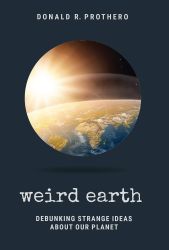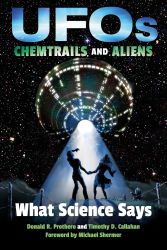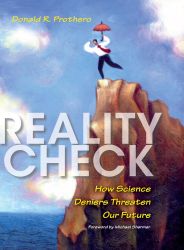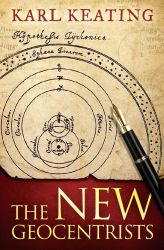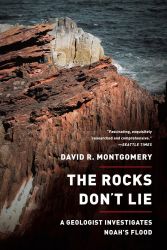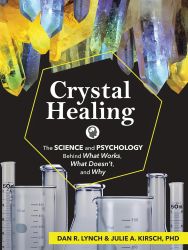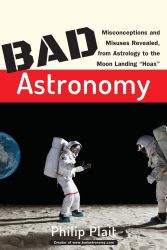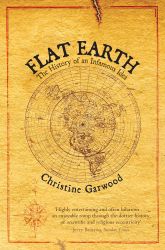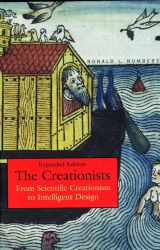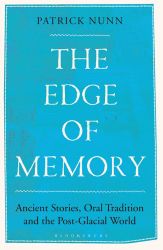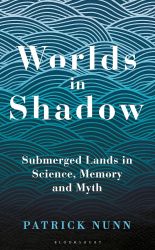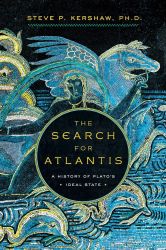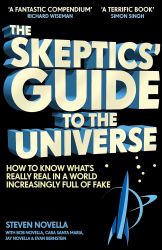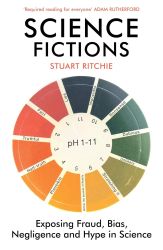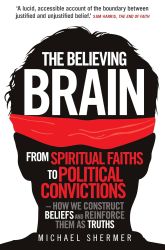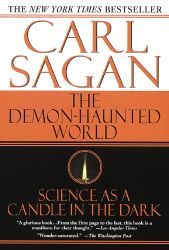keywords: earth sciences, pseudoscience
Geologist and palaeontologist Donald R. Prothero is a busy man. Next to writing a steady stream of books on geology, fossils, and evolution, he is a noted sceptic. Previous books have addressed cryptozoology, UFOs and aliens, and science denial more generally. In Weird Earth, Prothero debunks conspiracy theories and pseudoscience relating to our planet, making for an entertaining slaying of geological fringe ideas. However, his aim is not merely to demean, but also to show readers what the actual evidence is and how we gather it. If the idea of a flat earth strikes you as unbelievable, buckle up, because it gets much weirder.

Weird Earth: Debunking Strange Ideas about Our Planet, written by Donald R. Prothero, published by Red Lightning Books in September 2020 (hardback, 293 pages)
The concept and organisation of Weird Earth is reminiscent of the “25 Discoveries” book series that Prothero has written with Columbia University Press. Here, he takes 16 outlandish ideas, loosely grouped in themes, and picks them apart.
Appropriately, he starts with the currently best-known geological pseudoscience: flat-earthism, the idea that the earth is a flat disc rather than a globe. This is grouped with other planetary blunders, such as the hollow earth, the expanding earth, and geocentrism. Then there are typical Creationist ideas, such as flood geology, a young earth, and what can only be called dino-denial: the idea that dinosaurs are fake. Others are your standard New Age fare: ley lines, crystal healing, dowsing, UFOs on Mount Shasta, and the lost continent of Atlantis. A smattering of others deal with myths around shifts of the magnetic pole, earthquake predictions, and the claim that the moon landing was a hoax, admittedly an outlier that you would expect in the hands of Phil Plait.
Though I was familiar with most of these, Prothero presented many interesting details, especially on the history of some ideas. It is simply not true that most educated people in mediaeval times believed the Earth was flat, Prothero writes here. It has long been a fringe idea that only resurged in 1956 with the founding of the Flat Earth Research Society. Similarly interesting are Prothero’s comments on Bible history, all the more as he learned Hebrew in high school and read the Bible in its original language. This reveals all sorts of internal inconsistencies when it comes to the story of Noah’s flood, arguing against a literal interpretation. Prothero furthermore points out that many important geologists and palaeontologists who contributed to our scientific understanding had a Christian faith. The two do not have to be at loggerheads. It was only the birth of Christian fundamentalism, and then certain strains of creationism in the early twentieth century that saw a rejection of previously accepted, or at least tolerated, scientific theories. He does not really discuss geomythology, the idea that myths and stories might record historical events, such as past floods and post-glacial sea level rise. Though when discussing Atlantis, and reminding readers that this was a literary device invented by Plato, he does make a link to the Thera eruption.
“[Weird Earth makes] for an entertaining slaying of geological fringe ideas. However, [Prothero’s] aim is […] also to show readers what the actual evidence is and how we gather it [that] he sincerely hopes is the biggest takeaway from this book.”
I doubt that Prothero will make many friends amongst the adherents of the theories he debunks, as he does not mince his words. After laying out the evidence against geocentrism, he writes that “[…] only the religious extremism of the modern geocentrists makes them twist scientific data into incredible knots in order to preserve [discredited] ideas […]” (p. 59). The fact that creationists continue to believe in Noah’s flood despite all the evidence against it points to “[…] religious blinders [that] are so dense that [they] cannot tell common sense from fantasy anymore” (p. 137). A website that gives tips for crystal healing is put down as “complete gibberish, a mishmash of scientific ideas blended with pseudoscience and mumbo jumbo” (p. 210). And the internet is repeatedly described as a “cesspool of lies“. No doubt some readers will be put off by what they perceive as pomposity. I, personally, cannot disagree with anything he writes here and feel his frustration and pain while wading through this morass of scientific illiteracy, which is often brandished with a sense of pride and defiance.
The full catalogue of logical fallacies is on display here: cherry-picking of data, special pleading, moving of goalposts, claims of grand conspiracies, arguments from authority, etc. Now, to be fair, Prothero does not let scientists off the hook either. The book opens with a chapter on critical thinking and the nature of science where he reminds the reader that scientists are humans too and fall prey to the same cognitive errors and mental foibles. Fortunately, experimental replication and peer review will weed out bad ideas sooner or later. This stands in sharp contrast with Prothero’s revealing and sometimes tragically comical examples of how believers respond when confronted with evidence. More importantly, despite his exasperation, Prothero wants to go beyond regurgitating facts and is keen to explain how science has come to its conclusions. Thus, most chapters include a “how do we know?” section that he sincerely hopes is the biggest takeaway from this book. Especially as he feels that this is where our education system fails. Some of these are particularly extensive, with the rebuttal of flood geology spanning 18 pages with multiple illustrations.
“the reason many skeptics write books and articles, produce podcasts, and generally get worked up is to address the frankly shockingly large percentage of people who are on the fence, many of whom have a say over other people’s lives”
Prothero closes Weird Earth with an examination of why people believe weird things and where their beliefs come from. The reasons are, he writes, complicated. Primarily, our brains do not operate rationally but are “belief engines“, and both faith and group identity can be powerful overriding forces. In his opinion “It’s usually pointless to argue facts with someone who is deeply committed to demonstrably false beliefs, because you will never convince that person. You’ll just waste your time […]” (p. 232).
But then who is this book for? I feel Prothero misses a beat here in not identifying his audience. I agree with him that you will not sway hardcore believers. However, the reason many skeptics write books and articles, produce podcasts, and generally get worked up is to address the frankly shockingly large percentage of people who are on the fence, many of whom have a say over other people’s lives: parents, teachers, doctors and nurses, politicians etc. I like to think that not all them are beyond reason. They, then, are who books such as Weird Earth are written for.
Prothero ends by quoting Carl Sagan and I will steal that quote here. Call me dramatic, but I agree with the sentiment that science is our candle in the dark without which “clutching our crystals and religiously consulting our horoscopes, our critical faculties in steep decline, unable to distinguish between what’s true and what feels good, we slide, almost without noticing, into superstition and darkness” (p. 248). Weird Earth is one such candle in the dark and Prothero deserves praise for doing the ungrateful job that most people would rather not do: to patiently explain the reasons why certain ideas are wrong.
Disclosure: The publisher provided a review copy of this book. The opinion expressed here is my own, however.
Other recommended books mentioned in this review:
__________________________________________________________________
__________________________________________________________________
__________________________________________________________________
__________________________________________________________________
__________________________________________________________________
]]>
“The Edge of Memory: Ancient Stories, Oral Tradition and the Post-Glacial World“, written by Patrick Nunn, published by Bloomsbury Sigma (a Bloomsbury Publishing imprint) in August 2018 (hardback, 288 pages)
The term geomythology was originally coined by Dorothy Vitaliano in 1968 and described in her 1973 book Legends of the Earth: Their Geologic Origins. It remains a small but thriving research community with, for example, an edited collection, Myth and Geology, on the topic in 2007. With The Edge of Memory, Nunn focuses specifically on Australian Aboriginal stories that have been told for millennia and never written down. He presents 21 of them here, collected from around the continent. Many speak of floods and submergence, and Nunn neatly links this to the changing climate over the last ten thousand years. As we came out of the last Ice Age, sea levels rose, which Nunn thinks is what storytellers describe in these myths. Obviously, observing their world through a different lens than we do nowadays, such changes were interpreted as signs of angry or playful gods, rather than climatic phenomena or natural disasters.
Nunn’s writing is great, and he does a superb job when explaining the finer points of the geology involved in sea level rises and melting ice sheets. For example, I have yet to come across a clearer description of isostatic rebound (i.e. the rising of land when it has been unburdened from heavy ice sheets). The idea of legends and myths (including the above-mentioned Biblical flood) referring to past events is fascinating. Nunn thinks that we are unjustly denigrating oral stories, choosing to only trust the written word. Let us not forget, he says, that knowledge has been passed down generations in spoken form for most of our history – writing is a relatively recent invention in the grand scheme of things.
“[…] ancient stories and myths record within them descriptions of geological catastrophes and climatic changes. Welcome to the obscure academic discipline of geomythology.”
Fair enough, but I think it is more than justified to retain some healthy scepticism here. Writing has allowed us to pass far more and more detailed information down the generations. And, I would argue, it has been a very important contributing, if not decisive, factor in allowing technology and science to bloom. The spoken word, and especially human memory are notoriously unreliable, and people are prone to embellish memories and selectively forget and remember. Given that you are interpreting stories told in a different language, by people of a different culture, formed at a time when these people’s forebears lacked our understanding of the world, and passed down the generations like a game of Chinese whispers, means you have to make quite a few assumptions and informed guesses. I imagine opinions on how best to interpret stories will vary widely. To me it seems that, at best, this method allows you to identify interesting leads that would need corroborating with palaeoclimatological data, but I’m not sure you will ever be able to confidently say “these stories describe this particular change in the climate”. Luckily, Nunn is more than willing to admit these limitations and is sufficiently cautious in presenting his findings. And he shows how Aboriginals have sophisticated methods of cross-checking their stories to ensure fidelity in transmission.
Besides the traditional Australian stories, Nunn takes a quick look at a few other cultures in Europe and India that record stories hinting at rising sea levels. But it is not just flooding. He discusses a range of myths that hint at past volcanic eruptions, earthquakes, tsunamis, meteor strikes, landslides, the rapid disappearance of islands (see Nunn’s 2009 book Vanished Islands and Hidden Continents of the Pacific), or even extinct animals.
For the purpose of this book, he has ignored more recent events that have been well documented in, well, writing, such as the eruptions of Krakatoa (see Krakatoa: The Day the World Exploded), Laki (see Island on Fire: The Extraordinary Story of Laki, the Volcano that Turned Eighteenth-Century Europe Dark), or Tambora (see Tambora: The Eruption That Changed the World). In one of this footnotes he mentions the Toba supereruption, though he does not subscribe to the idea that it caused a genetic bottleneck for humans (more on this in my review of Prothero’s new book When Humans Nearly Vanished: The Catastrophic Explosion of the Toba Volcano), and anyway, this seems too far back in time to have been carried down the ages in stories.
“And what of Atlantis? […] Despite it being a literary device invented by Plato rather than a real place this has not stopped people from looking for it”
And what of the legend of Atlantis? Perfect example of why we need to remain sceptic. As Nunn also points out, despite it being a literary device invented by Plato rather than a real place (see for example The Atlantis Story: A Short History of Plato’s Myth and The Search for Atlantis: A History of Plato’s Ideal State), this has not stopped people from looking for it and assigning geological features to this legend (one of the more serious books on this topic is The Lost Empire of Atlantis: History’s Greatest Mystery Revealed).
The Edge of Memory has several helpful maps, though their reproduction suffers a bit. Some of them use light grey areas to show ancient coastlines, but the colours are so light they are hard to discern in some maps. The colour plate section, on the other hand, features some striking photos and illustrations.
As also shown by my review of The First Domestication: How Wolves and Humans Coevolved, we ignore traditional knowledge at our own peril. I maintain that healthy scepticism is warranted when interpreting them, but I have to agree with Nunn that this should not make us discard these stories outright. They have the potential to push back our collective memory by thousands of years, and coupling them to modern scientific findings will no doubt yield many more fascinating findings in the years ahead. With its heavy focus on Aboriginal stories (Nunn’s current study subject), The Edge of Memory is not intended as an authoritative overview of the whole discipline of geomythology. Nevertheless, he successfully champions this interesting academic discipline and provides a compulsively readable introduction.
Disclosure: The publisher provided a review copy of this book. The opinion expressed here is my own, however.

, paperback, ebook, audiobook or MP3 CD
Other recommended books mentioned in this review:
__________________________________________________________________
__________________________________________________________________
__________________________________________________________________
]]>